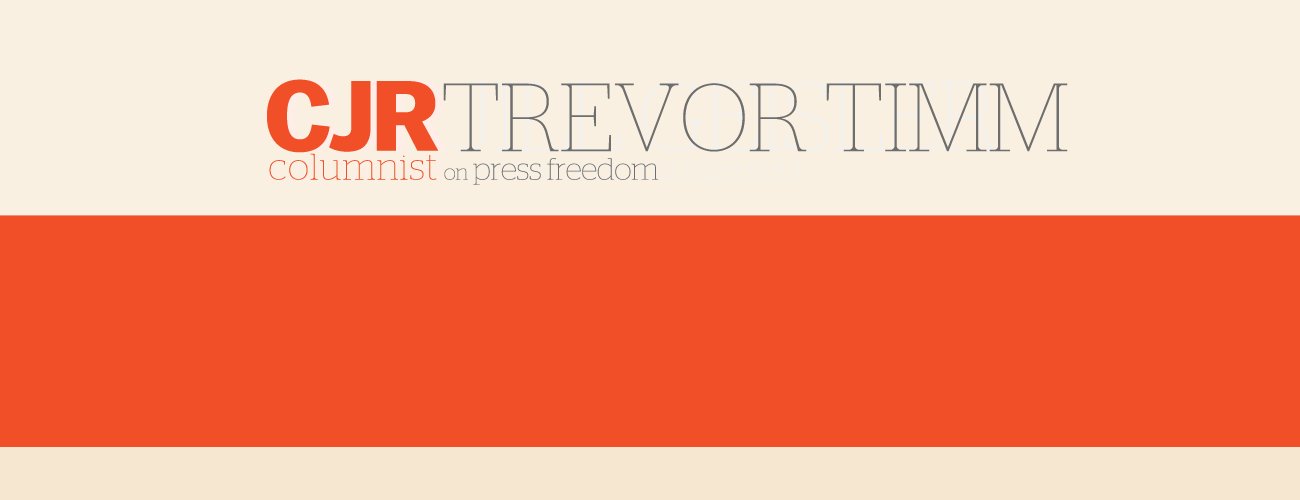Sign up for The Media Today, CJR’s daily newsletter.
ProPublica last year published a widely cited article linking Trump’s CIA nominee Gina Haspel directly to the waterboarding and torture of Abu Zubaydah when she was in charge of a CIA black site prison in Thailand in 2002. Yesterday, ProPublica was forced to retract and apologize for a significant part of the article’s content.
There’s no doubt it was a considerable mistake. You can imagine Team Trump will use the incident to muddy the waters about torture—with more “fake news” proclamations—in an attempt to get Haspel through the nomination process. But ProPublica did what it should have: issue a detailed correction along with an explanation about how it happened as soon as it had new information. Mistakes in reporting inevitably happen, no matter the subject, and it’s the news organization’s response to those mistakes that matters.
(It’s still indisputable, by the way, that Haspel was in charge of the black site when another captive was waterboarded, and that she played a key role in the destruction, against White House orders, of almost 100 hours of tapes that showed the CIA engaging in torture.)
But it’s worth taking a longer look at why a mistake like ProPublica’s is more likely to happen when reporting on CIA activities, and why everyone should be furious at the government, rather than place the blame solely on ProPublica.
ICYMI: After US journalist killed, a quest for answers
In its report, ProPublica was forced to use a combination of heavily censored CIA and court documents and anonymous sources to piece together what happened over a decade ago in the secret CIA prison Haspel ran. Many of the documents were made public only after years of Freedom of Information Act fights brought by public interest groups, while many other documents on Haspel’s CIA tenure remain classified.
These types of unintentional mistakes would be almost entirely avoidable if journalists did not have to read between the lines of ridiculous government redactions meant to cover up crimes.
The most obvious example of this is the Senate’s 500-page summary of the torture report it released in 2014. How many times is Haspel named in the torture report? We have no idea. The redactions on the report completely obscured the names of all participants in the torture program, including the CIA personnel involved, as well as their partners in crime from authoritarian dictatorships like Libya, Egypt, and Syria.
At the time of the report’s release, advocates proposed that CIA personnel should at least be identified by pseudonyms so that the public could understand how many people were involved and if a particular person was responsible for more than others. That proposal was rejected as well.
The CIA was given control over redactions by the Obama administration despite the fact that the report essentially accused the agency of committing countless felonies. It should have come as no surprise that the spy agency used that power not to “protect national security,” but to shield itself from accountability.
In its original report, ProPublica did include a line from a CIA spokesman saying, “nearly every piece of reporting that you are seeking comment on is incorrect in whole or in part.” Yet the spokesman refused to elaborate on any specific allegations or provide facts showing ProPublica was incorrect.
This is another classic tactic. Government officials will tell a journalist writing a critical story they are wrong about the facts, but refuse to explain how or why. Even if the spokesman is not telling the truth, it means the reporter will have to inject doubt and hedging into a investigative piece, which can muddy the waters of the piece’s thesis. If the spokesman is telling the truth, he or she can then wait until after the article is published to reveal exactly why it was wrong and use that information to discredit the news organization.
It’s yet another way the government uses its vast power for the most cynical and underhanded purpose possible.
The larger question remains whether anyone will shed more light on what, exactly, Haspel did and didn’t do as part of the CIA’s torture program. Members of Congress have already asked for more documents on Haspel’s CIA tenure to be declassified, but we have no idea if that will happen.
Despite the clear public interest, there’s also almost no chance the government will release the full Senate torture report—which consists of thousands of pages of evidence—any time soon. As journalist Ali Watkins tweeted, it took one and a half years (thanks to the CIA dragging its feet at every moment) to get the summary of the report released after a full court press by members of the Senate Intelligence Committee.
Yet there’s never been a more important time for the American public to see the entire report. Members of Congress can use their right under the Speech and Debate clause of the Constitution to put it in the congressional record, much like former Senator Mike Gravel did with the Pentagon Papers in 1971. Since Gravel, there hasn’t been another major case of a senator doing so, and I’m not holding my breath.
But a brave government official who has access to the report can still leak it to the press. They would be doing a vital public service. Though such an act would put any individual at great risk, there are few things more important to our democracy than holding government officials accountable when they commit crimes against humanity, such as those committed by the CIA.
ICYMI: Facing a critical moment, Vice makes an unexpected announcement
Has America ever needed a media defender more than now? Help us by joining CJR today.



